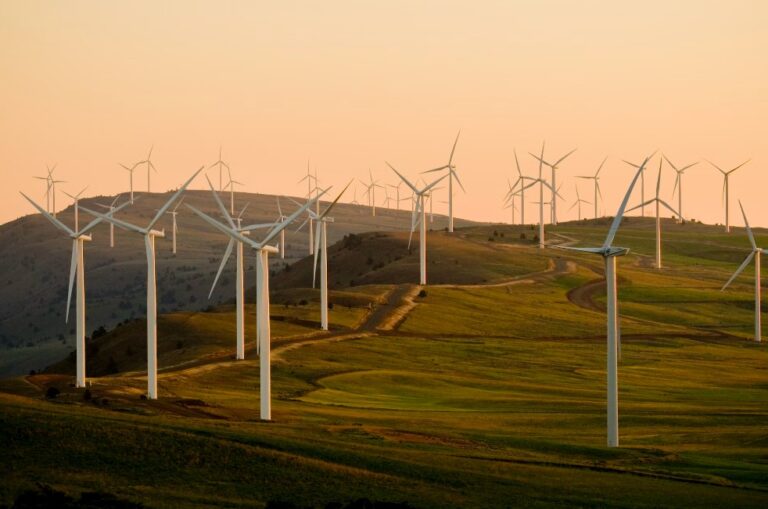With the urgent need to combat climate change, technology is playing a pivotal role in lowering carbon footprint across various sectors.
This goes from renewable energy sources to energy-efficient appliances, innovative solutions are emerging to reduce greenhouse gas emissions and promote sustainability.
Table of Contents
The 5 technologies to lower carbon footprint
In this article, we will look into five top technologies that are making substantial strides in lowering carbon footprints and shaping a greener future.
1. Solar energy systems
Solar energy has attained enormous popularity as a clean and renewable energy source. In fact, is one of the most effective ways to lower the carbon footprint in your homes.
Photovoltaic panels are installed on rooftops or in solar farms and harness energy from the sun to produce free electricity which is the most reliable and abundant renewable energy resource available.
This technology reduces carbon emissions and also offers businesses and homeowners the opportunity to generate their own power. Thus lowering dependency on fossil fuels.
solar energy systems are becoming more affordable and efficient, making them an increasingly available option for environmentally-conscious organizations and individuals.
2. Energy monitors
Lowering carbon footprint reduction would be impossible without energy monitoring systems. These gadgets monitor energy use in real time, allowing users to spot patterns of waste or inefficiency.
Most energy motors these days now include web and mobile apps. So you can keep tabs on your energy consumption from anywhere with an internet connection. They can also alert you if they discover an unusual trend of energy consumption and the possible item responsible.
Homeowners may monitor their electricity consumption with a smart meter and make educated choices to reduce their energy footprint. With the help of a quality energy monitor, homeowners may reduce their carbon footprint and their monthly electric bills by making informed decisions about how they use their home’s energy.
3. Energy-efficient products
Saving money on utility bills is as easy as buying energy efficient products that use less energy. Products like these make better and more efficient use of energy in our daily lives. LED lamps, for instance, last substantially longer than incandescent bulbs while using significantly less electricity.
Products like ENERGY STAR-certified appliances and LED lights are created to use less energy without sacrificing performance.
Low-flow shower heads and smart power strips are just two examples of energy-saving products that may be put in and around the home to cut down on energy consumption caused by everyday activities.
By automatically turning off unused outlets, smart power strips decrease the energy drain caused by gadgets that are plugged in but not in use. These items not only save power, but they also cut down on electricity costs and carbon dioxide emissions.
4. Electric chargers and vehicles
The transportation industry is responsible for a significant amount of greenhouse gas emissions. So it is crucial that we make the switch to electric cars (EVs) and increase access to charging stations. One of the most significant ways to reduce one’s carbon footprint is through the use of electric vehicles and chargers.
It is more cost-effective and helps reduce pollution from using fossil fuels to switch to an electric vehicle. The growing use of electric vehicles requires the installation of electric chargers in both private and public locations.
Investing in a charging station for your electric vehicle is a smart move to ensure you never experience a battery depletion while driving. As home EVSE (Electric Vehicle Supply Equipment) becomes more common, it is becoming easier for EV owners to charge their vehicles quickly.
5. Smart thermostats
Residential and commercial HVAC systems account for a sizable portion of a building’s total energy consumption, and thus of its carbon footprint. The energy efficiency of heating, ventilation, and air conditioning systems can be greatly improved with the help of smart thermostats.
They may be managed from afar with the help of corresponding smartphone apps. And, even work in tandem with other “smart home” gadgets.
To conserve money and energy, this feature can “pre-heat” the home before coming home from work. Or, the system can be turned off remotely altogether. Energy costs for heating and cooling can be reduced thanks to this remote access option and others.
Smart thermostats help conserve energy, minimize utility bills, and reduce carbon emissions by decreasing unneeded heating or cooling while preserving comfort.
Securing a greener and more sustainable planet
Combating climate change calls for cooperation from citizens, companies, and governments. It is crucial to this endeavour to take use of state-of-the-art technological developments.
Technologies such as solar panels, energy monitors, energy-efficient goods, electric vehicle chargers and batteries, and smart thermostats are all making significant contributions to lowering industries’ carbon footprints.
We can hope for a brighter, greener future thanks to the proliferation and improvement of these technologies. We can all do our part to make the world a better place by adopting these inventions and using them in our daily lives and communities.
Read also: Earth Overshoot Day, what is it and why it is necessary to delay it year by year












